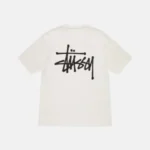Choosing the right PP woven bag (Polypropylene woven bag) for your needs involves considering several factors such as the intended use, size, weight capacity, and features required. Here are the key aspects to consider:
1. Purpose of Use
- Agriculture: If you’re using the bags for storing grains, fertilizers, or animal feed, make sure the bags are moisture-resistant and durable.
- Construction: For sand, cement, or gravel, choose bags with high weight capacity and tear resistance.
- Shopping Bags: For reusable shopping bags, look for laminated PP woven bags with appealing prints and handles.
2. Weight Capacity
- Lightweight Items: For lightweight products, a standard PP woven bag may suffice. Choose one with a lower GSM (grams per square meter).
- Heavy-Duty Items: For bulkier items, opt for a high-strength bag, typically in the range of 60-100 GSM or more, depending on the weight.
3. Bag Size
- Dimensions: Choose a size based on the volume and dimensions of what you’re packing. PP woven bags come in various sizes and can even be customized.
- Capacity: The capacity typically ranges from 5 kg to over 100 kg. Choose based on how much you plan to store or transport.
4. Material Type and Lamination
- Non-Laminated Bags: Suitable for dry products that don’t need protection from moisture. These bags are breathable.
- Laminated Bags: Coated with a protective layer, laminated bags are water-resistant and are great for products that need to be protected from moisture or dust.
5. UV Protection
- Outdoor Storage: If you plan to store the bags outdoors, choose UV-treated PP woven bags to prevent degradation from sun exposure.
6. Bag Features
- Handle Type: For ease of transport, especially for shopping or packaging, choose bags with strong, durable handles.
- Valve or Open Mouth: Open-mouth bags are common for manual packing, while valve bags are better for automated packing systems.
- Printing & Branding: If you need custom branding or product information, ensure the bag can support high-quality printing.
- Gusseted Bags: These bags have side folds that allow for expansion, making them ideal for bulkier or oddly shaped items.
7. Environmental Considerations
- Reusability: Some PP woven bags are designed to be reusable, especially for shopping or promotional purposes.
- Recyclability: Ensure the bags can be recycled after use if sustainability is important to you.
8. Cost
- Budget: Higher quality, custom-printed, or UV-protected bags may cost more. Balance your budget with your specific needs for durability and functionality.
9. Ventilation and Breathability
- Ventilated Bags: If you are packing items that require airflow, such as vegetables, fruits, or seeds, opt for ventilated or mesh PP woven bags. These bags allow air circulation, which helps prevent spoilage.
- Non-Ventilated Bags: For products like cement or chemicals, where exposure to air or moisture must be minimized, non-ventilated, laminated bags are more appropriate.
10. Chemical Resistance
- Special Coatings: If you’re handling chemicals, fertilizers, or products that may corrode or degrade standard materials, consider bags with special chemical-resistant coatings.
- Laminated or Multi-Layer Bags: These can help provide extra protection against spills, leaks, and chemical reactions.
11. Closure Options
- Sewn Closures: Common for bulk items like grains, flour, or sugar. They are typically sewn shut after filling and provide a secure seal.
- Zipper or Drawstring: If you need easy access and reusability, such as for retail or consumer products, opt for bags with zipper or drawstring closures.
12. Color and Aesthetic Considerations
- Custom Colors: Many suppliers offer customization options, allowing you to choose specific colors to match your brand or product type.
- Printing Options: For branding or product identification, ensure the bag can accommodate high-quality flexographic or screen printing. Bags with vibrant prints and logos are excellent for promotional use.
13. Food-Grade Certification
- For Food Products: If the bags are intended for packaging food items, look for FDA-approved or food-grade certified PP woven bags. These bags are made from non-toxic materials and are safe for storing consumables.
14. Anti-Slip Treatment
- Stackability: For bags that need to be stacked in storage or during transportation, choose PP woven bags with an anti-slip coating. This feature helps prevent bags from sliding off each other, ensuring stability during stacking.
15. Tear-Resistant and Anti-Puncture
- Durability: If the bags will be subjected to rough handling, consider tear-resistant or anti-puncture designs. This is especially important for packaging sharp or rough materials like gravel or metal components.
16. Bulk Bags (FIBC – Flexible Intermediate Bulk Containers)
- For extremely large quantities, such as in the construction or industrial sector, bulk PP woven bags (FIBC) can hold up to 1000 kg or more. These are ideal for large-scale transport and storage of heavy materials like sand, gravel, or chemicals.
17. Compliance with Industry Standards
- Safety and Standards: Ensure that the PP woven bags meet relevant industry standards or regulations, particularly if they are being used in sensitive industries such as pharmaceuticals, food, or construction.
By taking into account these additional considerations, you can ensure that the PP woven bags you select are perfectly suited to your specific operational, logistical, and branding needs.
By evaluating these factors, you’ll be able to select the right PP woven bag for your specific requirements. Read More…



